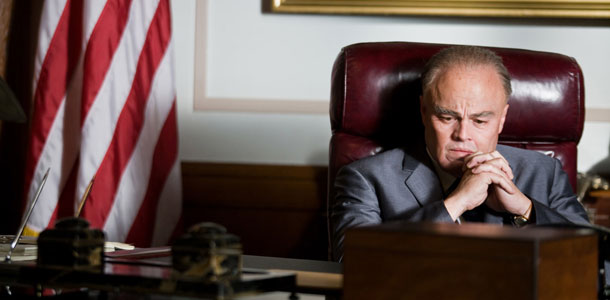Leonardo DiCaprio goes back in time and plays the Federal Bureau of Investigation’s first director, John Edgar Hoover, in Clint Eastwood’s biopic “J. Edgar.”
The story is told by Hoover as he takes you through his career in the FBI from beginning to end. As the FBI’s first director, Hoover is portrayed as an arrogant, stubborn and bulldog-like leader. However, behind closed doors he is seen as a scared man who is paranoid about losing his power and struggles with his sexuality.
The film is structured around the manuscript Hoover begins to write about his FBI career, told through his voice-over narration which provides perspective into the stories that built his career.
Hoover said he values loyalty more than anything else. This is where his right-hand man, Clyde Tolson (Armie Hammer), and secretary Helen Gandy (Naomi Watts), come in. Although DiCaprio did his best to portray Hoover, Hammer shines as Clyde Tolson, whose character allows the audience to see another side to Hoover.
Hoover hires Tolson as his personal director, even though Hoover believes he is underqualified. However, Tolson’s loyalty attracted Hoover, but their relationship slowly begins to grow more personal.
Under the pressure of the public eye and scrutiny from his mother, Hoover must choose whether Tolson is really what he wants in his struggle to wrestle power to his hands. Tolson was able to bring out a side of Hoover that was rarely seen. He had an ability to keep Hoover honest and reveal an intimate side.
If Eastwood’s goal was to take us back in time, he succeeded. In the days of communism, prohibition and war, he was able to depict Hoover as the strong and relentless leader that he was.
However, it was DiCaprio who succeeded in showing us what Hoover was really like when no one was watching. Throughout the movie Hoover worries about the legacy he will leave behind for America to see. He is so worried about being adored by the public that he is oblivious to the people he hurt during his career.
Hoover’s narration also provided insight to events such as the Lindbergh kidnapping and the John Dillinger shooting. Although the movie depicted the story in Hoover’s words, it is characters like Tolson who show us the real Hoover.
The drama in Hoover’s life was compelling, but Eastwood failed to go deep enough. He showed us glimpses of Hoover’s struggle within. However, Eastwood’ direction never gave details as to why Hoover acted like he did. The audience is provided with the facts, but the film fails to paint the whole portrait which leaves the audience feeling the story was incomplete.

